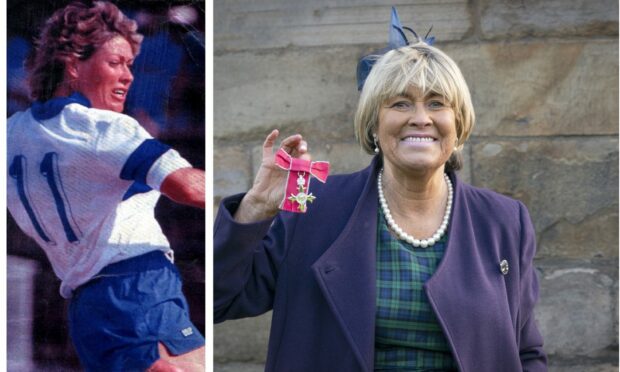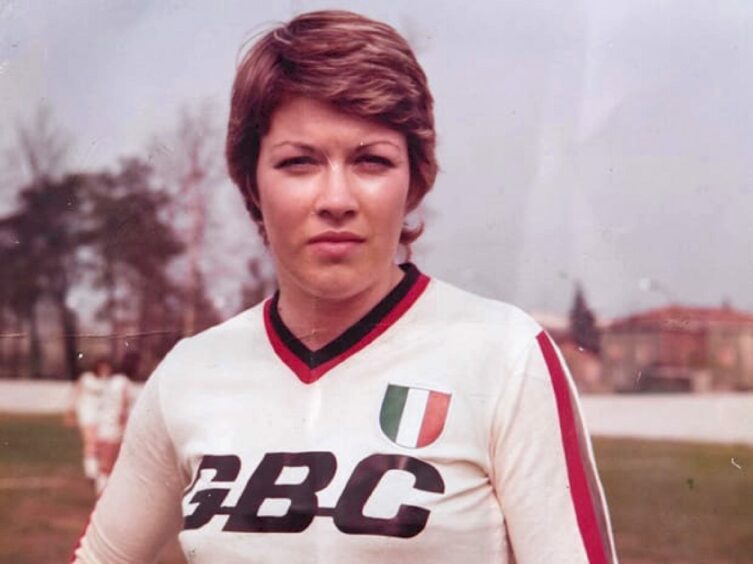Rose Reilly is someone every Scottish football fan should know – and now Aberdonians will get the chance to find out more about her incredible career.
Reilly, 68, will be in town for a Q&A on Thursday March 2 at Aberdeen Sports Village, which will be free to attend and no sign-up is required.
The event is sponsored by Doric Books who published a children’s book on Scottish football icons last year, which detailed the careers of Reilly and Denis Law.
Reilly, who played as a striker, is one of the most important figures in the history of women’s football in Scotland and next month’s event is a chance for more people to find out about her trailblazing career.
When did Reilly play?
Reilly grew up playing football for a local club in Ayrshire in the 1950s, but to do so she had to cut her hair and pretend to be a boy.
She would go on to play women’s football for Stewarton Thistle throughout the 1960s and 70s, winning the inaugural Scottish Cup and played in the first WFA Cup final against Southampton.
🚨 Q&A with the legend Rose Reilly taking place in Aberdeen on 2nd March ⚽️👏
See poster for details. No sign up required👇 pic.twitter.com/TcaxbFicvk
— Jo Belot (@jomurphy92) February 20, 2023
Reilly moved to Westthorn United in 1972 and won the domestic treble: the Scottish Cup, the League Cup and the first League title. She also played in another WFA Cup final.
In November 1972, Reilly featured in Scotland Women’s first-ever international match, against England, and scored the Dark Blues’ second goal in the eventual 3-2 defeat.
But Reilly’s international career with Scotland wasn’t to last long as in the mid 1970s, she and two others, Elsie Cook and Edna Neillis, were banned for criticising the Scottish FA, which meant she could no longer play the beautiful game in her home country.
Why did Reilly move to Europe?
Before the ban from the Scottish FA, Reilly had already moved to Europe to play professionally first in France with Reims before moving to AC Milan, which marked the beginning of a glittering career in Italy.
She would go on to become the most decorated female player in Serie A history, winning eight league titles, countless cup medals and topped the goal-scoring charts on four occasions – where one season she netted 45 times.
While in Italy, Reilly also featured for the national team and starred in the 1984 edition of the Mundialito, which was considered the ‘unofficial’ women’s World Cup.
She lifted the trophy with Italy that year and was voted as player of the tournament, which essentially meant she was considered to be the best in the world.
“I was always a Scottish heart beating under an Italian jersey,” Reilly once said.
Reilly retired from football aged 40 and has since been named in the Scottish Football Hall of Fame, the Scottish Sports Hall of Fame, made an MBE and received an honorary degree from Glasgow University.


Conversation